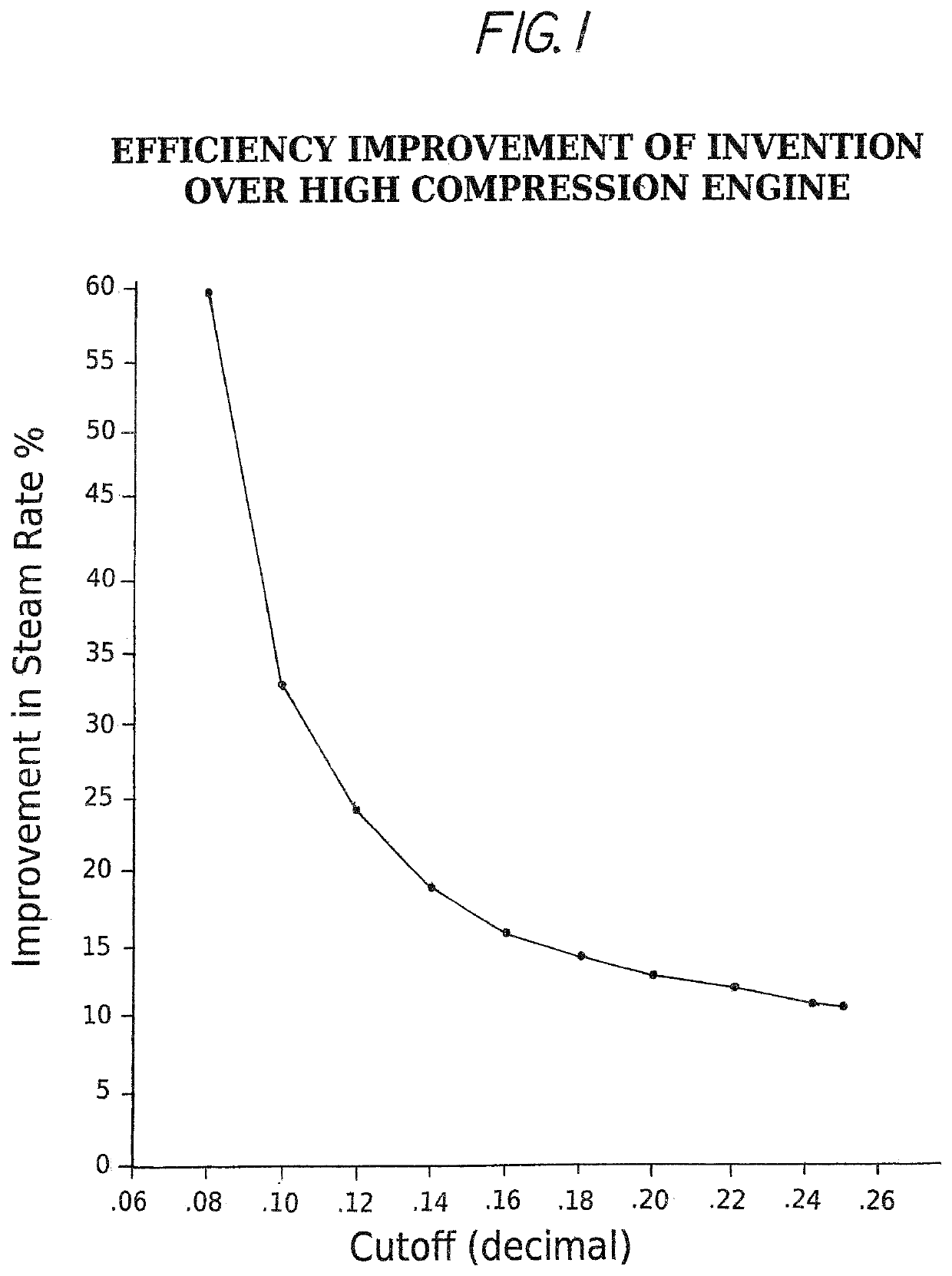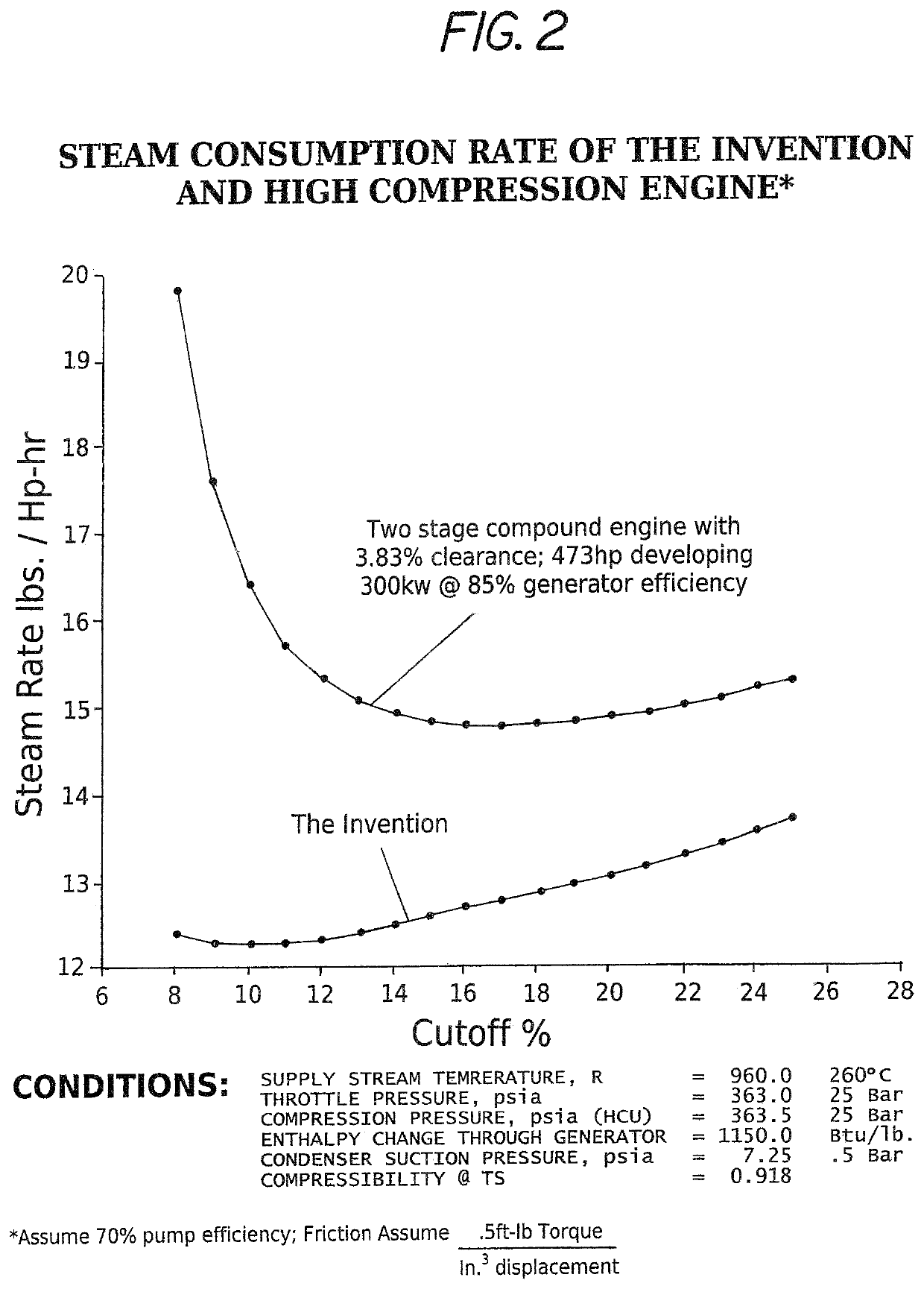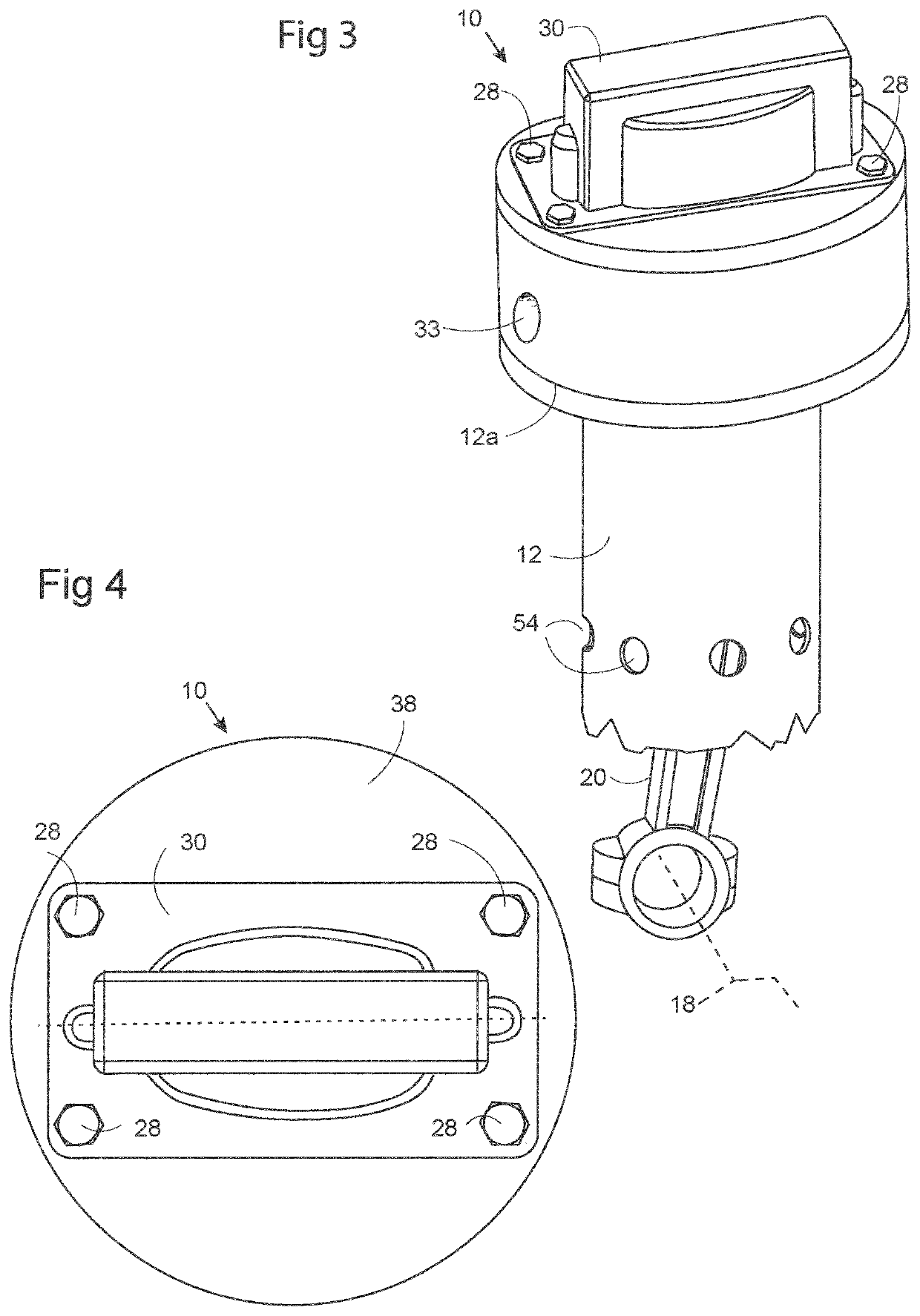High efficiency steam engine having improved steam cutoff control
a high-efficiency, steam engine technology, applied in the direction of machines/engines, mechanical equipment, non-mechanical valves, etc., can solve the problems of inability to achieve the thermal efficiency of internal combustion engines, the thermal efficiency of steam powered piston engines cannot match the thermal efficiency of otto or diesel engines developed at the end of the 19sup>th /sup>century, and the inability to operate at speeds over 5000 rpm, etc., to achieve high thermal efficiency
- Summary
- Abstract
- Description
- Claims
- Application Information
AI Technical Summary
Benefits of technology
Problems solved by technology
Method used
Image
Examples
Embodiment Construction
[0019]Refer now to FIGS. 1 and 2 which show how a very sizeable improvement in thermal efficiency is provided by the present invention compared with what is generally acknowledged to be the most efficient uniflow steam engine design known. FIG. 1 which is derived from FIG. 2 shows that at a 16% cutoff the thermal efficiency of the invention is over 15% better, at 12% cutoff it is almost 25% better and at an 8% cutoff where the prior art is at or near a stall condition there is an extraordinary 59% improvement of thermal efficiency in engines using the present invention. The present invention is about 20% better when each engine is run at its optimum efficiency. In a typical steam engine, the efficiency improves as the cutoff is lowered. FIG. 1 shows that it is the lower cutoff range where the present invention produces its greatest improvement.
[0020]FIG. 2 illustrates in the upper graph the performance of a 2 cylinder double expansion high compression steam engine powered by biomass...
PUM
 Login to View More
Login to View More Abstract
Description
Claims
Application Information
 Login to View More
Login to View More - R&D
- Intellectual Property
- Life Sciences
- Materials
- Tech Scout
- Unparalleled Data Quality
- Higher Quality Content
- 60% Fewer Hallucinations
Browse by: Latest US Patents, China's latest patents, Technical Efficacy Thesaurus, Application Domain, Technology Topic, Popular Technical Reports.
© 2025 PatSnap. All rights reserved.Legal|Privacy policy|Modern Slavery Act Transparency Statement|Sitemap|About US| Contact US: help@patsnap.com



